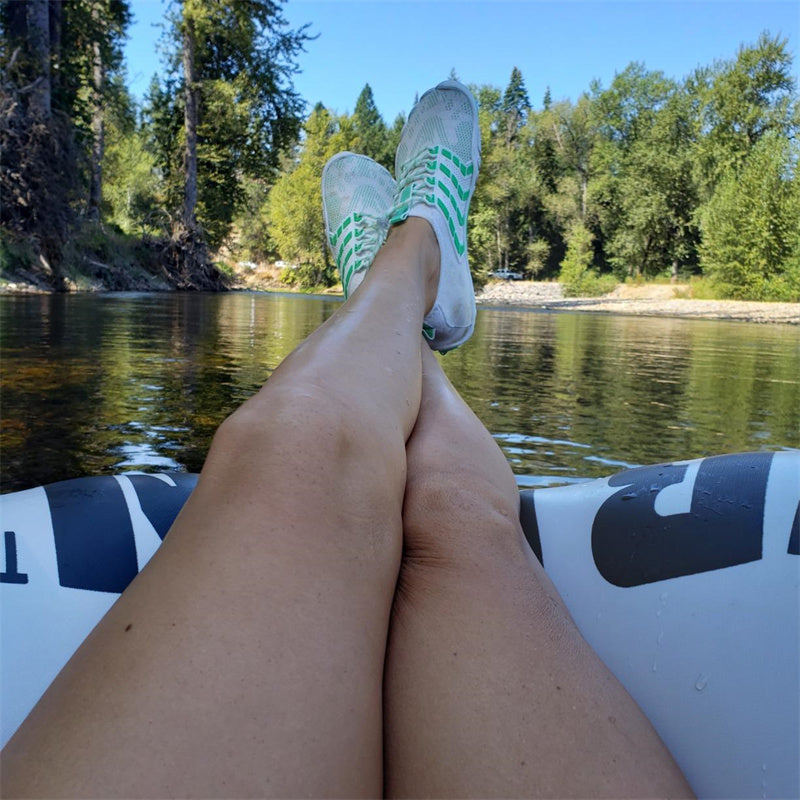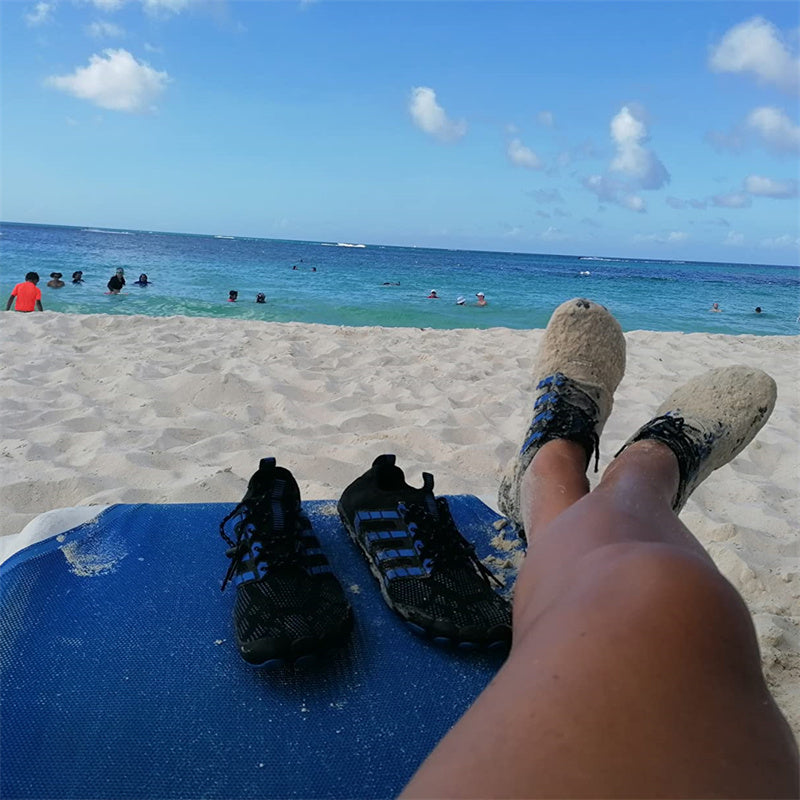We are often faced with questions or misunderstandings about the nature of barefoot shoes in your requests by mail or on our social networks. This is quite understandable. Barefoot shoes are actually an oxymoron: being barefoot while wearing shoes is impossible.
A question that always comes up: should you wear these shoes barefoot, that is, without wearing socks? We anticipate by answering: wearing socks is possible! Many people also think that the word barefoot shoe refers to the wide toe shoes.
Instead, "barefoot" refers to the sensation of wearing shoes: they provide a sensation equivalent to walking barefoot, except that you are actually wearing shoes. Barefoot shoes are intended to optimize the natural movement of the feet as much as possible. This is also known as "minimalist footwear". To clarify, we explain exactly what good barefoot shoes are.

No drop:
The "drop" is the difference in height between the front of the shoe and its heel. The drop of barefoot shoes is zero. The heel does not have a rise or other elevation. The sole has the same thickness along its entire length. The entire foot is flat on the ground, as if you were barefoot.
Thin soles :
Barefoot shoes have very thin soles. The wearer of the shoes must feel the ground under his or her feet. Like the palms of the hands, the soles of the feet have countless nerve endings that transmit information to the brain about their environment. Known as "sensory feedback", this information influences our balance and sense of orientation in space. Watelves® insoles are only about 6.3 mm thick.
Lightness and flexibility:
The millimeter thickness of the soles is just as important as their flexibility. Only the material of the soles determines the flexibility of the shoes. The upper should also be light and flexible.

Wide toe space:
The majority of shoes are narrower in the front, and not only in the case of elegant women's shoes, but also for sneakers. This shape does not respect the shape of our feet. They are compressed into a shape that is not natural for them. As a result, the freedom of movement and stability of the feet is restricted. The toe space of barefoot shoes is particularly wide and anatomical. This allows the toes to have a grip on the ground for natural walking.
Stop the support:
Classic shoes usually include some type of padding, lining or insole. The goal is to support and relieve the foot in its work. One might think that support is good. When the foot is not working on its own, however, it tends to weaken. It is as if the foot is on standby while walking, while it is in motion. Barefoot shoes are deliberately free of this kind of support. The foot must (re)learn to function on its own. It therefore becomes stronger over time.
